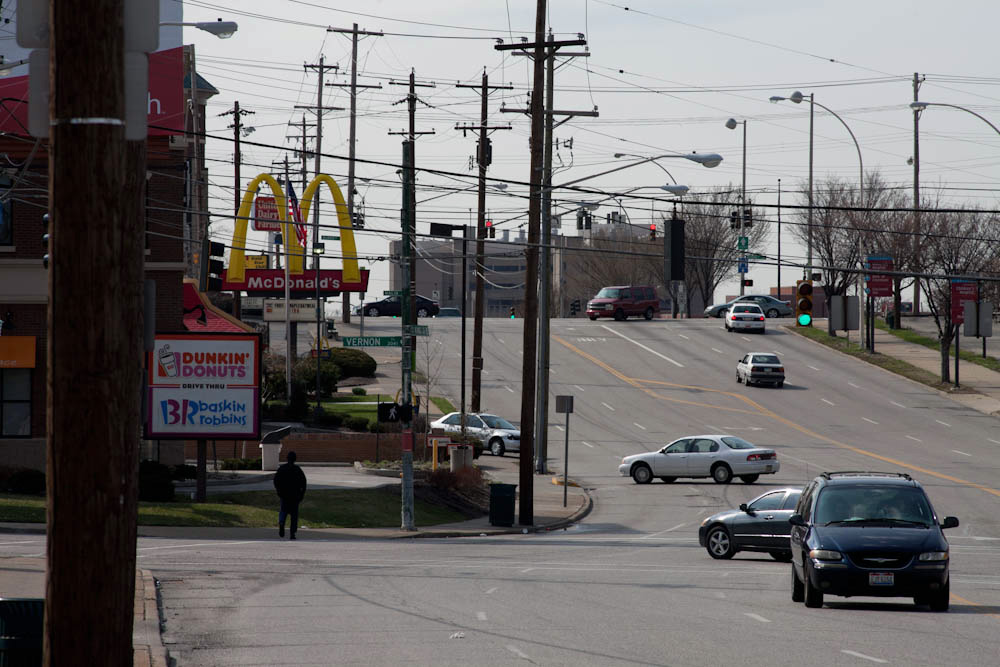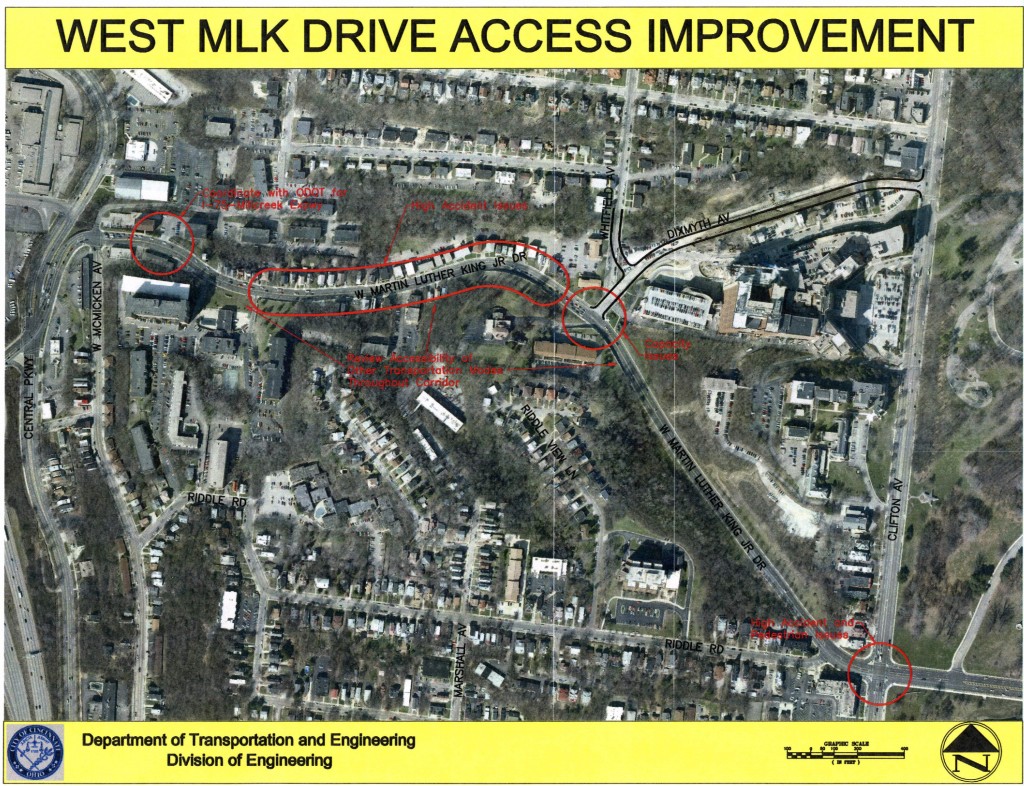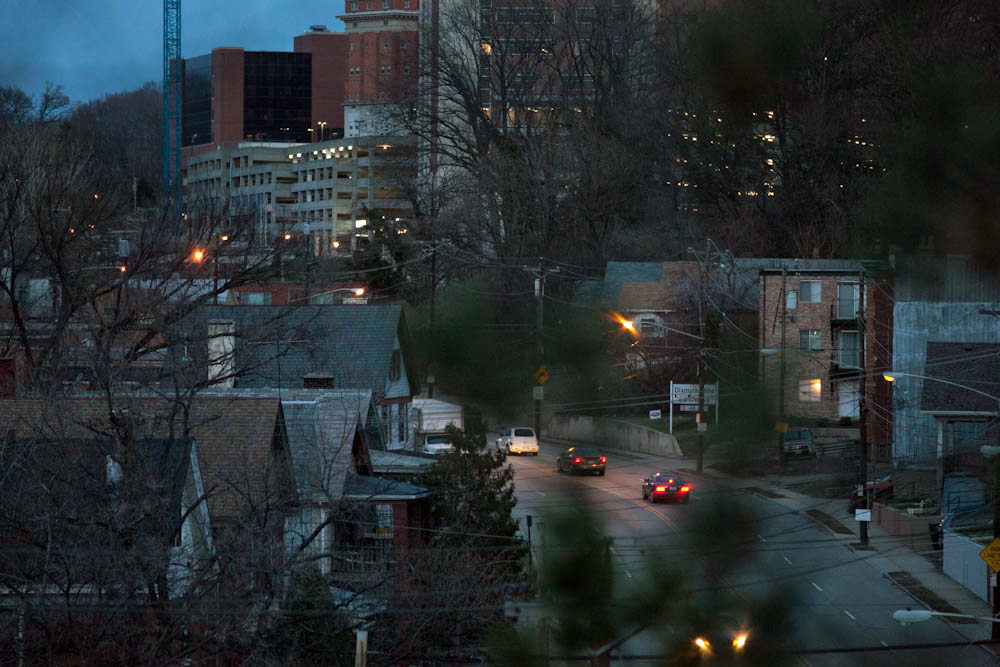Three projects planned for MLK promise a dramatic reconfiguration of the three-mile cross-town roadway by 2020. The Ohio Department of Transportation’s (ODOT) Millcreek Expressway (I-75) reconstruction and the City of Cincinnati’s West MLK Drive Access Improvement have been funded and will commence construction in 2013. A third project – construction of an interchange at Interstate 71 – is still in preliminary planning stages and is scheduled to be built sometime after 2015.
Eminent domain proceedings are already underway which will see 30 homes and apartment buildings between McMicken Street and Good Samaritan Hospital demolished in 2012 or 2013. A wider and straighter West Martin Luther King Drive is planned to take their place, along with a bike path along the road’s northern edge.
The much larger I-71 interchange project at East Martin Luther King Drive will see many more residential properties taken – possibly more than 100 – in order to build the project’s ramps. Drawings shown at the February 15, 2011 meeting of Cincinnati City Council’s Sub Committee on Transportation & Infrastructure showed the entire shallow valley between Reading Road and Gilbert Avenue north of East Martin Luther King Drive redeveloped by automobile-oriented commercial buildings.
History of Martin Luther King Drive
What is now known as Martin Luther King Drive was created by connecting three existing streets: Dixmyth Ave, St. Clair and Melish Avenue. The St. Clair extension, a six-lane stretch of Martin Luther King Drive between Clifton Avenue and Jefferson Avenue, was built in the early 1960’s. The Melish Avenue Extension between Reading Road and Victory Parkway was built in two phases: a bridge over I-71 built in 1970 and a half-mile stretch between Gilbert Avenue and Victory Parkway mid-decade. The final link – the climb between Dixmyth Avenue near Good Samaritan Hospital – opened in the early 1980’s.
In 1987, Cincinnati city councilman Tyrone Yates led an effort to rename Reading Road after Martin Luther King, Jr. This proposal was rejected on technical grounds and attention was shifted to a 16-mile cross-town path that would have seen the entirety of Westwood Northern Boulevard, Hopple Street, the Hopple Street Viaduct, Dixmyth, St. Clair, Melish, and Madison Rd. to Madisonville renamed for the Civil Rights leader.
This grandiose proposal was scuttled by the great-great grandson of either Casper or James Hopple (reports do not specify), the brothers who came to Cincinnati in 1802 for whom Hopple Street and the viaduct are named.
Plans for a Martin Luther King street were downscaled to the present three-mile stretch between Central Parkway and Victory Parkway, but met more resistance from those who objected to the renaming of St. Clair. An offer was made to rename Central Parkway after General Arthur St. Clair, but no substitute St. Clair designation was made after Martin Luther King Drive came into existence that summer.
The Future of Martin Luther King Drive
The two projects in planning at either end of Martin Luther King Drive do not address the horrendous appearance of the road’s central segment between Jefferson Avenue and Reading Road. Here, no design guidelines were ever put in place, and the quaint residential character of Corryville has been replaced by a confusion of fast food restaurants, gas stations, parking lots, parking garages, telephone poles, and faux-urban apartment complexes.
The burying of utilities is the obvious starting point for any improvement of the area. But a comprehensive plan is needed for properties bordering MLK between Jefferson and Reading in order to assure that the increased traffic introduced by the I-71 interchange motivates higher quality construction.
The if-Houston-had-hills character of Martin Luther King Drive has no doubt negatively affected the ability of the University of Cincinnati to recruit top students and faculty. It is a prime reason why many suburban Cincinnatians prefer trips to new suburban hospitals over the old ones. This situation is the legacy of the WWII and Baby Boomer generations. It might be too late to wish for Martin Luther King Drive to become a showpiece, but young people who profess to care for this city’s future must be vigilant in demanding something better than what we have had handed to them.
Photographs by Jake Mecklenborg for UrbanCincy.



